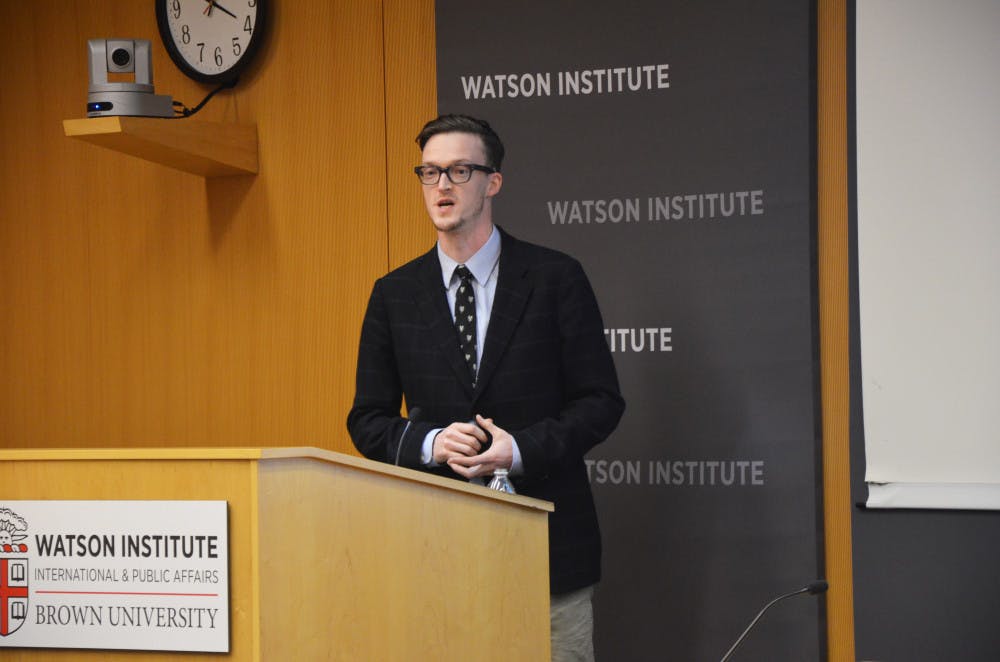All militant organizations must make decisions about how to employ a number of tactics to most effectively achieve strategic objectives, said Philip Potter, assistant professor of politics at the University of Virginia and principal investigator for a Minerva Initiative project sponsored by the Department of Defense. Potter discussed how militant organizations use tactics including hijacking, kidnapping and suicide bombing in a talk Monday evening titled “Tactical Diversity in Militant Violence” at the Watson Institute for International and Public Affairs.
In the lecture, Potter outlined the paper he co-authored last month with Michael Horowitz, associate professor of political science at the University of Pennsylvania, and Evan Perkoski, a postdoctoral research fellow at the John F. Kennedy School of Government at Harvard.
Tactical diversification — using a strategically varied set of militant tactics within an organization — strengthens militant leadership and is important to consider when dismantling threats and planning counterterrorism attacks, he said.
Statistical evidence shows that successful militant groups generally use more tactics than unsuccessful ones, he said. “So why do only some groups choose to diversify?” he asked. While advantages of tactical diversification include better “adaptation to counterterrorist innovations” and a “psychological advantage” against the opponent, there are also disadvantages, he said.
“It dilutes focus and introduces new vulnerabilities” as well as diminishing the strength of command, he said. “It becomes harder to control your foot soldiers, harder to ensure your orders are being carried out,” he said, adding that the lack of strong, centralized leadership could lead to increased indiscriminate violence and use of force.
In addition, tactical diversification diminishes defensive resources and increases the risk of failed attacks, Potter said. Innovation and experimentation sometimes “lead to situations that fail,” he said, adding that failure represents not only a loss of the militant group but also “a loss of credibility in the eyes of the people.”
Militant organizations are typically conservative and have the mentality of “short- to medium-term survival as opposed to long-term strategic objectives,” Potter said. “There are high rewards and high risks to diversification,” which demonstrates why tactical diversification does not occur more often, he said.
Potter highlighted two trends from the paper that may explain increases in tactical diversity: heightened pressure from state governments and competition with other militant groups. Since diversification allows groups to act in a variety of ways, it mitigates singular pressure from the group as a whole, he said.
“Diversification is a reaction to pressure on organizations,” Potter said. “Organizations diversify under duress.”
He provided a simplified sketch of the research design behind the paper, which showed tactics of various militant organizations spanning the last 30 to 40 years. While Potter said there is still “much to know about these organizations,” he added that he would be interested in investigating whether the phenomenon of increased diversity under pressure similarly arises from intra-organizational pressures.
Nicholas Miller, assistant professor of nuclear security and policy, political science and international and public affairs, offered his own academic perspective on Potter’s paper after the talk. Tactical diversification matters because it helps gauge the unpredictability of “a militant group’s repertoire of violence,” Miller said. But the research in the paper did not account for the variance of domestic resources available to different groups, he said. Nonetheless, “it is fun to read a paper that explores something new,” he added.





